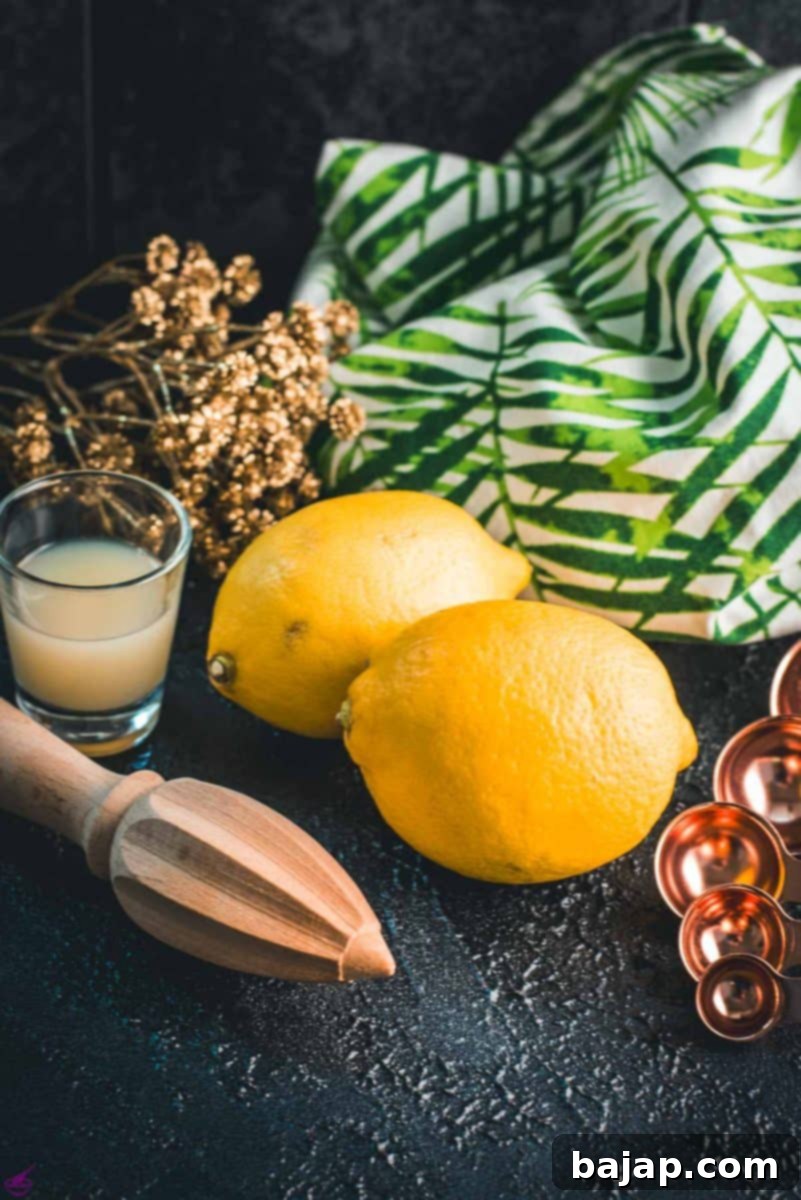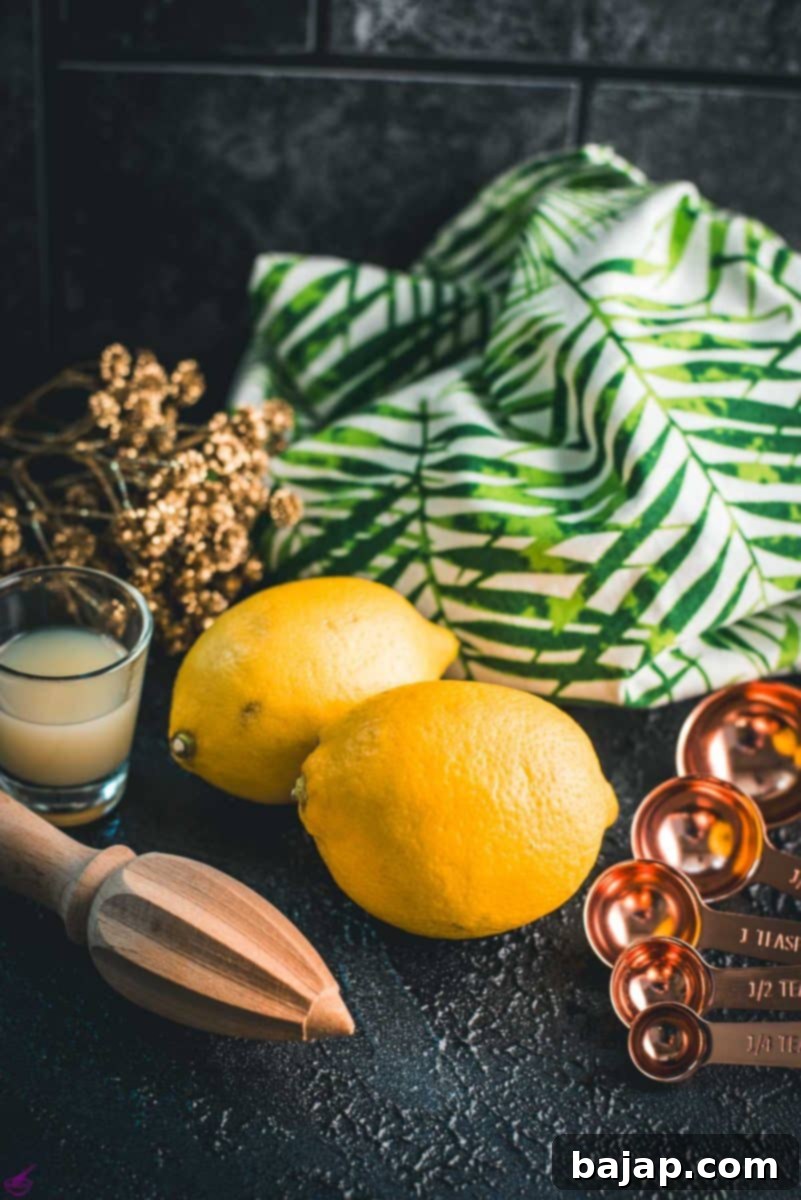How Much Lemon Juice in One Lemon? Your Ultimate Guide to Citrus Yields
Lemons are truly a kitchen powerhouse – vibrant, fragrant, and incredibly versatile. From brightening up a savory dish to adding a zesty kick to desserts, or even concocting a refreshing drink, their fresh, tangy flavor is irreplaceable. But when a recipe calls for a specific amount of lemon juice, a common question arises: exactly how much juice can you expect from a single lemon? And how many lemons should you buy to avoid a last-minute scramble?
This comprehensive guide dives deep into the juicy details of lemons, helping you precisely estimate your needs for any culinary or household project. Get ready to unlock the full potential of this wonderful citrus fruit!

Understanding Lemon Juice Yield: How Much Juice Per Lemon?
Knowing the average juice yield of a lemon is crucial for efficient cooking and baking. While lemons vary, a good general rule of thumb is that one fresh lemon typically yields about 2 to 3 tablespoons of lemon juice. This range largely depends on the lemon’s size, but other factors also play a significant role.
Let’s break down the yield by lemon size:
- Small Lemon: Approximately 2 tablespoons (about 1 fluid ounce) of juice.
- Average/Medium Lemon: Roughly 2 ½ tablespoons (about 1.25 fluid ounces) of juice.
- Large Lemon: Expect around 3 tablespoons (about 1.5 fluid ounces) of juice.
It’s important to remember that these are averages. The exact amount can fluctuate based on several factors, including the lemon variety, its ripeness, and even how you extract the juice. A plump, ripe lemon will always be more generous than a dry, under-ripe one.
Factors Influencing Lemon Juice Yield
To get the most out of your lemons, consider these key factors that influence their juice content:
- Size: As mentioned, larger lemons generally contain more juice. However, some smaller varieties can be surprisingly juicy.
- Variety: Different lemon varieties have varying juice-to-pulp ratios. Eureka and Lisbon lemons, common in supermarkets, are known for their high acidity and good juice yield. Meyer lemons, while sweeter and less acidic, also offer a decent amount of juice.
- Ripeness: Ripe lemons are softer and heavier for their size, indicating more juice. Under-ripe lemons tend to be harder and yield less juice. Over-ripe lemons can sometimes be dry or have a mealy texture.
- Temperature: Room temperature lemons yield significantly more juice than cold lemons. The colder the lemon, the more rigid its cell walls, making it harder to extract liquid.
- Freshness: Freshly picked or purchased lemons are always the juiciest. As they age, lemons can dry out, reducing their juice content.
Maximizing Your Lemon Juice Extraction
Don’t leave a single drop behind! With a few simple tricks, you can ensure you’re getting every last bit of precious liquid from your lemons. These techniques help break down the internal membranes, allowing for easier and more thorough juice extraction.
Pre-Juicing Preparation Tips:
- Roll it: Before cutting, firmly roll the whole lemon on a countertop with the palm of your hand for 10-15 seconds. This breaks down the internal pulp and softens the fruit, making it easier to squeeze out the juice.
- Microwave it: For an even greater yield, microwave a whole lemon for 10-20 seconds. Be careful not to overheat it. This warms the fruit, relaxing the cell structure and releasing more juice.
- Cut lengthwise: Instead of cutting the lemon crosswise, try cutting it lengthwise. Some find this method allows for a better grip and more efficient squeezing, especially with manual reamers.
Recommended Juicing Tools:
- Manual Citrus Reamer: A simple, effective tool for extracting juice directly into a bowl or cup.
- Handheld Citrus Squeezer: Often made of metal, these squeezers press the lemon halves from the outside, efficiently extracting juice while catching seeds. They are excellent for quick juicing.
- Electric Citrus Juicer: For larger quantities, an electric juicer makes the process effortless and can extract a significant amount of juice in a short time.
- Fork or Tongs: If you don’t have a juicer, you can stick a fork into the cut half of a lemon and twist it while squeezing, or use tongs to press the lemon half.
Fresh vs. Bottled Lemon Juice: Why Fresh Wins Every Time
While bottled lemon juice offers convenience, it simply cannot compare to the vibrant flavor and aroma of freshly squeezed lemon juice. Bottled versions often contain preservatives and lack the bright, complex notes and essential oils found in fresh lemons. For any recipe where lemon is a star ingredient, or for best results in general, freshly squeezed lemon juice is always the superior choice.
Beyond flavor, fresh lemon juice also provides a higher concentration of Vitamin C and other beneficial antioxidants. It truly makes a noticeable difference in everything from a delicate dessert to a robust marinade, elevating the entire dish. Plus, you get the bonus of lemon zest!
Storing Lemons and Fresh Lemon Juice
To ensure your lemons are always ready for juicing and to preserve any leftover juice, proper storage is key.
Storing Whole Lemons:
- Countertop: Lemons can last about a week at room temperature, especially if kept out of direct sunlight. This is ideal if you plan to use them soon.
- Refrigerator: For longer storage, place whole lemons in a sealed plastic bag or an airtight container in the refrigerator’s crisper drawer. They can stay fresh for 3-4 weeks this way.
Storing Fresh Lemon Juice:
- Refrigerator: Store freshly squeezed lemon juice in an airtight container or a clean glass bottle in the refrigerator. It will stay good for 3-4 days. For extended freshness, you can add a pinch of salt.
- Freezer: For longer-term storage (up to 3-4 months), freeze lemon juice in ice cube trays. Once frozen, transfer the cubes to a freezer-safe bag or container. This is a fantastic way to have pre-portioned lemon juice ready for drinks or recipes anytime.
How Many Lemons Do I Need? Your Essential Conversion Chart
Calculating the exact number of lemons for a recipe can sometimes be a puzzle, especially when you’re aiming for precision in baking or mixology. To simplify your culinary adventures, we’ve created a handy conversion chart. This table will help you determine exactly how many lemons you’ll need based on the amount of juice required, taking into account different lemon sizes.

Lemon Juice Conversion Chart
| Lemon Juice Needed | Number of Lemons Needed (Approximate) |
| ½ Tablespoon | A Quarter of 1 Small Lemon |
| 1 Tablespoon | Half of 1 Small Lemon |
| 1 ½ Tablespoons | Half of 1 Average Lemon |
| 2 Tablespoons | 1 Small Lemon or ¾ Average Lemon |
| 2 ½ Tablespoons | 1 Average Lemon |
| 3 Tablespoons | 1 Large Lemon or 1 ½ Small Lemons |
| 3 ½ Tablespoons | 1 ½ Average Lemons |
| ¼ Cup (4 Tablespoons) | 1 ¾ Average Lemons or 2 Small Lemons |
| ½ Cup (8 Tablespoons) | 3 ½ Average Lemons or 4 Small Lemons |
| ¾ Cup (12 Tablespoons) | 5 ¼ Average Lemons or 6 Small Lemons |
| 1 Cup (16 Tablespoons) | 7 Average Lemons or 8 Small Lemons |
This comprehensive table should serve as your go-to reference when planning your recipes. As a general rule of thumb, it’s always wise to err on the side of caution and purchase one or two extra lemons, especially if you’re unsure about their size or freshness. It’s better to have a little too much juice than not enough!
Versatile Uses for Your Fresh Lemon Juice
With a clear understanding of lemon juice yields, you’re ready to put this liquid gold to work! The applications for fresh lemon juice are virtually endless, extending far beyond the kitchen.
In the Kitchen:
- Cooking: Lemon juice brightens flavors in everything from roasted vegetables and grilled fish to chicken dishes and marinades. It can tenderize meat, deglaze pans, and prevent browning in fruits and avocados.
- Baking & Desserts: A vital ingredient in lemon tarts, pies, cakes, muffins, and cookies. It provides the essential tartness that balances sweetness and adds moisture. Don’t forget the zest for an extra aromatic punch!
- Beverages: From classic lemonade and iced tea to cocktails and infused waters, fresh lemon juice is a cornerstone of refreshing drinks. It adds a crisp, tangy note that awakens the palate.
Beyond the Kitchen:
- Cleaning: Lemon juice is a natural disinfectant and degreaser. Use it to clean countertops, cutting boards, remove rust stains, or even polish copper. Its fresh scent also acts as a natural deodorizer.
- Beauty & Personal Care: Diluted lemon juice can be used as a natural hair lightener, a skin toner (use with caution and always dilute), or to strengthen nails.
Conclusion
Understanding how much lemon juice is in one lemon transforms you into a more confident and efficient home chef. No more guessing games at the grocery store or mid-recipe surprises! Armed with this knowledge and our handy conversion chart, you can precisely plan your purchases and effortlessly incorporate the vibrant, tangy goodness of fresh lemons into all your culinary creations and household tasks. So go ahead, grab some lemons, and enjoy the zest of life!
Other Zesty Recipes for You to Try
Now that you’re a lemon juice expert, why not put your skills to the test with some delightful lemon-infused recipes? Here are a few favorites that showcase the incredible versatility of this bright citrus fruit:
- Gin Tonic with Lemon
- No-Bake Lemon Cheesecake
- Lavender Lemon Muffins
- Lemon Sugar Cookies
- New Year’s Lemon Punch
- Lemon White Chocolate Chip Cookies
- Lavender Spritz Cocktail
- Strawberry Spritz
